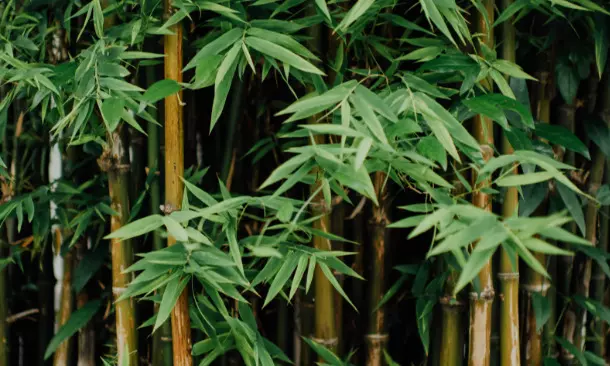The Art of Healing the Earth
From parched earth to living green, VK Saxena’s vision redefined regeneration — proving that one leader’s conviction can turn barren land into a self-sustaining ecosystem of hope

A few years ago, when VK Saxena stood before the dusty, wind-swept expanse of Nichla Mandwa — a remote tribal village in Rajasthan’s Udaipur district — he saw not desolation but possibility. Where others saw cracked earth and dying shrubs, he envisioned bamboo groves swaying in the wind, birds nesting under cool canopies, and children playing where nothing had grown for decades. That vision — of turning wasteland into wealth, both ecological and economic — became not just a project, but a personal mission that would ripple across states and inspire a new model of grassroots environmental regeneration.
Rajasthan: Breathing Life into Dust
The revival of the 25-acre barren patch at Nichla Mandwa began under VK Saxena’s leadership. It was here that his belief in community-driven, low-cost ecological restoration first took tangible shape. In 2021, when India committed to restoring 26 million hectares of degraded land by 2030, Saxena translated that national pledge into local action. The villagers, led by their woman sarpanch, offered 25 acres of Gram Sabha land for rejuvenation. At Saxena’s direction, over 5,500 saplings were planted, dominated by two resilient bamboo species from Assam — Bambusa Tulda and Bambusa Polymorpha. Complementing them were guava, mango, moringa, papaya, and amla trees. A solar-powered borewell irrigated the field; a defunct check dam was revived to trap rainwater; kitchen waste from nearby hotels became organic mulch. Within a short span, Nichla Mandwa transformed. The air turned cooler, birds returned, and the once-silent land began to hum with life. The project, completed at a modest cost of ₹ 5 lakh, proved that environmental transformation doesn’t demand immense capital — only conviction and collective will. The regenerated land also began providing bamboo for incense sticks, kites, furniture, and handicrafts — linking ecology with local economy, exactly as Saxena had envisioned.
Delhi: From Dumping Ground to Baansera
When VK Saxena assumed charge as Lieutenant Governor of Delhi, he brought this same philosophy of green reclamation through community action to the capital. Along the polluted floodplains of the Yamuna near Sarai Kale Khan lay a vast stretch of debris and waste — a landscape most had given up on. But Saxena saw potential once again. In May 2022, he launched “Baansera”, meaning the abode of bamboos — a living laboratory of regeneration. Over 18 months, what was once a dumping site turned into one of Delhi’s most remarkable ecological recoveries. Under his close supervision, around 30,000 bamboo saplings were planted, rising now to heights of over 30 feet. The soil, once toxic, began nurturing Lakadong turmeric from Meghalaya and tulips that bloom every spring. Water bodies glisten with reflections of tall bamboo clusters; walking trails and play areas attract families daily. Baansera is now both a carbon sink and a cultural space, hosting yoga sessions, festivals, and community gatherings — an embodiment of Saxena’s belief that urban ecology must serve both nature and people. More than an environmental showcase, Baansera stands as a symbol of continuity — proof that the same seed of thought sown in Rajasthan’s deserts could bloom on Delhi’s riverbanks.
Gujarat: The Green Belt by the Narmada
Saxena’s environmental journey, however, began even earlier — in his home state of Gujarat, where he conceptualised a sustainable green belt along the Narmada Canal in Gandhinagar. Launched in 2021, the project planted 10,000 bamboo saplings along a 10-kilometre stretch on either side of the canal. The idea was simple yet profound: use bamboo to stabilise the banks, conserve soil, cool the microclimate, and create a resource base for local industries. By 2025, the bamboos had grown to 25–30 feet, forming a living wall of green. The project brought twin dividends — environmental protection and rural livelihood — providing raw material for cottage industries producing incense sticks, furniture, kites, and handicrafts. What began as soil conservation evolved into a template for integrated green development — one that blended ecology, economy, and empowerment in equal measure.
Global Recognition, Personal Roots
In 2025, the United Nations Convention to Combat Desertification (UNCCD) recognised the Nichla Mandwa restoration as a model of community-led ecological revival. For Saxena, the acknowledgement was deeply personal — a reaffirmation that India’s solutions to global climate challenges can grow from the grassroots up. The UNCCD highlighted how the project perfectly aligned with India’s Land Degradation Neutrality targets and the global goal of restoring 350 million hectares by 2030. Yet Saxena remains steadfast that the true credit lies with the people — the villagers who offered their land, the workers who dug the trenches, and the countless hands that nurtured the saplings. “Sustainability,” he often says, “cannot be imposed; it must be owned.” Across three states, from Rajasthan’s tribal hills to Delhi’s floodplains and Gujarat’s canal banks, VK Saxena’s green footprints tell a consistent story — that environmental change begins with a single human decision. His model rejects the notion that sustainability is the domain of large corporations or grand budgets. Instead, it celebrates hands-on governance, community trust, and nature’s quiet resilience. Today, the wind that once carried dust through Nichla Mandwa now rustles through green bamboo leaves — a sound that echoes Saxena’s enduring belief: that even the most barren lands can breathe again, if one has the faith to plant, nurture, and wait.



